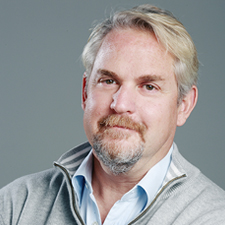Concept is for patients to take a pill containing nanoparticles programmed to detect cancers or other disease symptoms and a wearable gadget would report their findings
Google is using the same biomarker molecules as clinical laboratories in an attempt to enable in vitro monitoring of an individual’s health status. The device is under development and represents yet one more effort by Google (NASDAQ:GOOG) to penetrate the market for consumer health services.
This futuristic project is under development by the Google X Life Sciences team. The goal is create a device that would allow patients to noninvasively self-diagnose most diseases and health conditions.
The team is led by Andrew Conrad Ph.D.. The device under development is called the NanoParticle platform. It is a tool that continuously monitors an individual’s health status from the inside and reports what it finds through a wearable, watch-like device.
How the NanoParticle Concept Would Work
“Essentially, the idea is simple: You swallow a pill with nanoparticles, and they’re decorated with antibodies, or molecules that detect other molecules,” Conrad said in an interview at the WSJ.D Live conference in November 2014.
“They course through your body and because the core of these particles are magnetic, you can call them somewhere,” he explained, suggesting that these nanoparticles could be trapped in veins at the wrist by putting on a magnetic wristband. “These little particles go and mingle with the people, we call them back to one place, and we ask them, ‘Hey, what did you see?’”
Initially, Google plans to use this platform to target cancers. Developers hope the device may be particularly useful in determining if a cancer drug is working or to detect a recurrence. Conrad noted that the nanoparticles could be programmed to look for differences between healthy and diseased or damaged tissues. The nanoparticles could and then attach to the unhealthy tissue, or stick to a fragment of DNA in the cancerous or cancer cells.
NanoParticle Device Could Be a Complement to Medical Laboratory Testing
Conrad and his development team also believe the device could be used to monitor various health risk factors, particularly if there is a family history of a disease such as cancer or heart attack, or for early detection of various diseases. It could be programmed to seek evidence of fatty plaque in blood vessels associated with heart disease, or flag high potassium levels linked with kidney disease. Used in this way, it could create the opportunity for pathologists to play a role in monitoring the patient’s condition and offering timely consultation to the patient and his or her physician.
The developers believe that the nanoparticles could use light or radio waves to transmit readable findings and measurements to the wristband device, which would read these particles to enable patients to monitor their own health status. Or, the wristband device could be programmed to transmit information through the Internet, thus providing doctors a way to continuously monitor their patients, Conrad observed.
Click here to see video
In the video above, Google’s Andrew Conrad Ph.D., who Heads the Google X Life Sciences division, explains the concept of how nanoparticles could enable people to monitor their own health on a wristband that reads diagnostic information relayed by the nanoparticles and/or sent it to their physicians. (Video copyright WJS.D Live.)
Envisioning Proactive Medical Technologies to Support Diagnostics
This is just one of a number of health technology research projects under way by Google X’s Life Sciences team, which is composed of biomedical engineers and scientists. Most recently, the company announced a contact lens that monitors diabetics’ blood glucose levels through the tears in their eyes.
“The way in which we envision doing this is inverting the paradigm in medicine—which is currently reactive and episodic—to a new paradigm that is proactive and cumulative,” Conrad said in a report published by Wired, noting that this involves building “gizmos” that can monitor your health in new ways.

Andrew Conrad received his Ph.D. in Cell Biology at the University of California Los Angeles. He co-founded the National Genetics Institute and served as its Chief Scientific Officer. Conrad also was formerly Chief Scientific Officer for Laboratory Corporation of America (LabCorp). (Picture copyright Flatiron Health)
Other Life Sciences projects under development by Google X are the Baseline Study, which is attempting to build the world’s largest genome database, and Calico (California Life Company), which is attempting to solve the puzzle of aging by analyzing the genomes of people who live to be 100 years or older. (See Dark Daily, “Google’s Calico Start-up to Sequence Whole Human Genomes of Healthy 100-Year-Olds in Project to Solve Puzzle of Human Aging,” March 26, 2014.)
NanoParticle Platform is Still at Least Five Years in the Future
Bringing the Nanoparticle platform to fruition, according to a Wall Street Journal report is five years or more in the future. Industry experts noted that the researchers must identify coatings (biomarkers) that would make the nanoparticles bind to specific cells. Also, Google doesn’t know yet how many nanoparticles are needed to make this diagnostic system workable.
Currently, Google X is actively looking for partners to help bring this diagnostic tool to market. While commercialization of the technology is still years away, it is another example of a unique technology under development that could improve clinical diagnostics, as well as have a disruptive impact on pathology groups and medical laboratories.
—Patricia Kirk
Related Information:
Google Developing a Pill that Would Detect Cancer and Other Diseases
Google Stole Its Smart Contact Lens From Microsoft. And That’s a Good Thing



